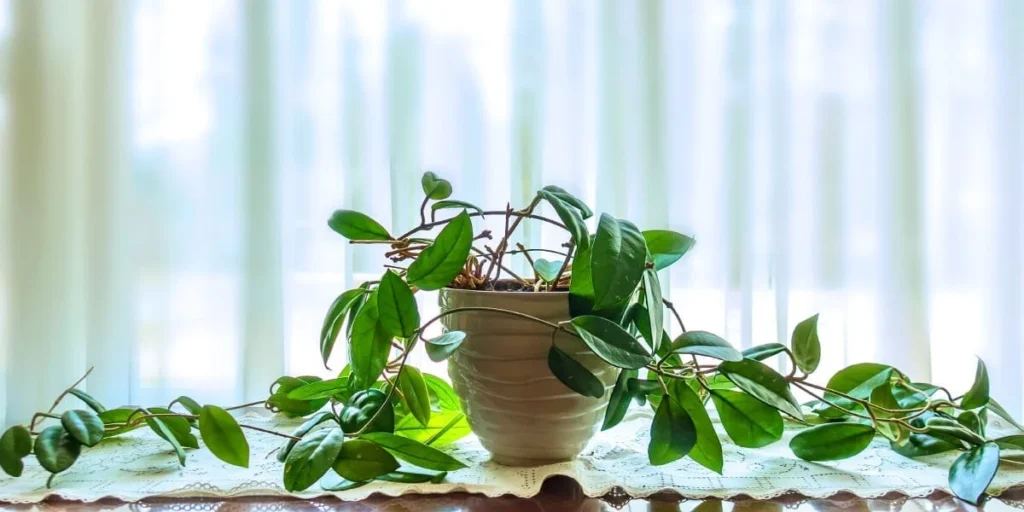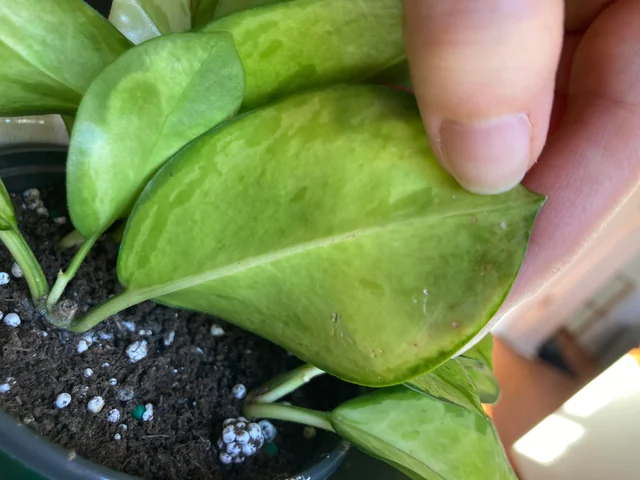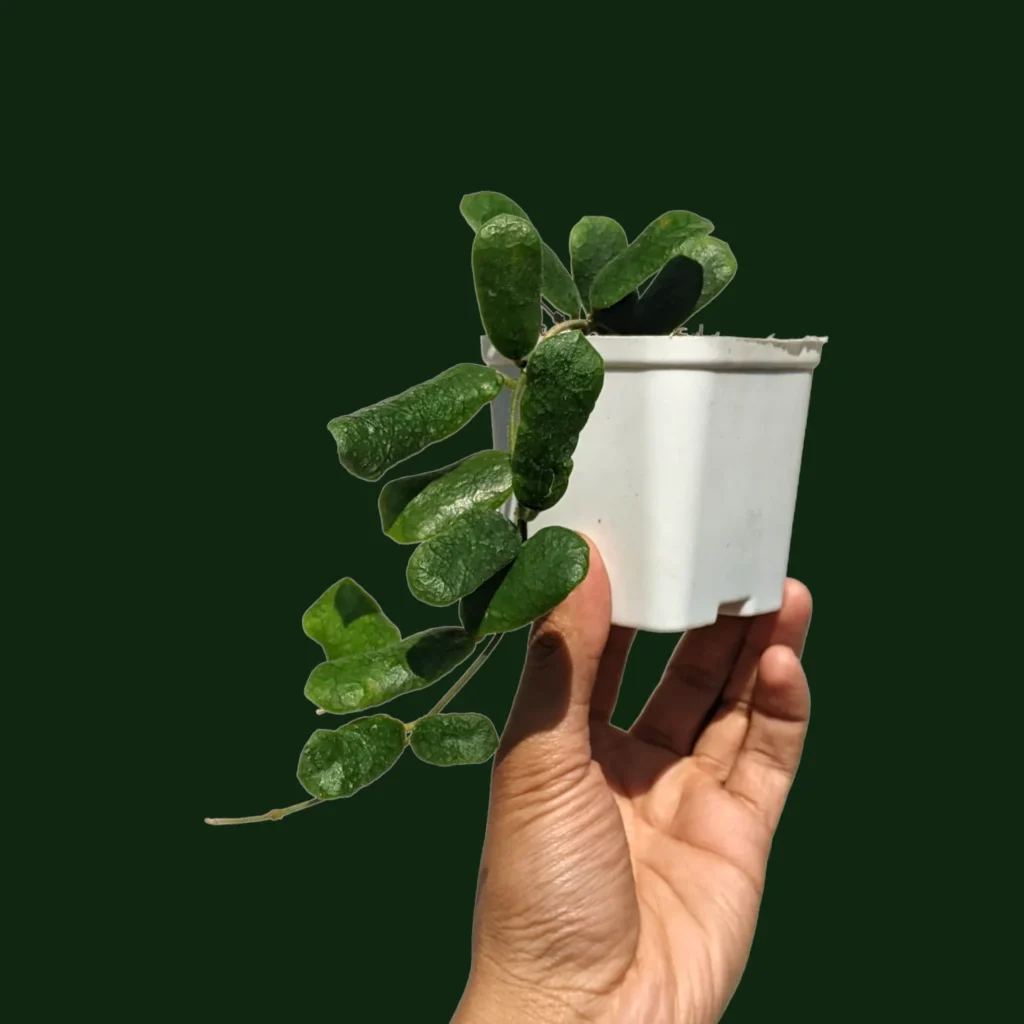Learn all about growing and caring for the unique Hoya Joy houseplant! This trailing semi-succulent vine features thick, colorful leaves and amazing clustered blooms when its needs are met.
If you’re searching for a unique, low-maintenance houseplant to brighten up your living spaces, the Hoya Joy might just be your new best friend! Part of the Apocynaceae or dogbane family, this semi-succulent trailing vine is prized by indoor gardeners for its thick, waxy leaves and ability to produce amazing clustered blooms.
Also known as the Hindu Rope Plant, Hoya Joy is a hybrid cultivar resulting from a cross between the popular wax plant species Hoya carnosa and Hoya lacunosa. It combines the best growth habits of both parents into an easy-to-grow, compact plant perfect for hanging baskets, shelves or even mounted displays.
With their thick, semi-succulent foliage spangled in shades of green, cream and pink, Hoya Joy plants add lovely splashes of color without demanding too much attention or care. Learn how to meet this variety’s basic needs, and you’ll be rewarded with a lifetime of interesting foliage patterns and potential spring flower clusters. It’s no wonder they’ve become such a hit with houseplant enthusiasts!
Growing Hoya Joy Plants
Despite their lush, tropical appearance, Hoya Joy plants are remarkably unfussy when grown as houseplants if you can mimic their natural growing conditions. They need plenty of bright light, well-draining soil, and periods of drought between waterings to remain happy and healthy indoors.
Light Requirements

In their native habitats across Eastern Asia and Australia, hoyas grow as epiphytes clinging to trees or rocks, where they receive plenty of bright, filtered light. Indoors, Hoya Joy prefers medium to high light levels. An east or west-facing window is ideal, or situate it within a few feet of a southern exposure.
Insufficient light will cause new leaves to lose their vibrant pink and white variegation, maturing into solid green. If the plant isn’t receiving enough light, its stems may become spindly and elongated as it stretches toward the nearest light source. This etiolated growth is a sign the plant needs brighter conditions.
Conversely, constant direct sun exposure can scorch or bleach the foliage entirely white. Protect your Hoya Joy from intense afternoon rays by shading or moving it back from the window. Well-lit conditions with some shade replicating its natural dappled forest habitat are perfect.
Water and Soil Needs

Like most semi-succulent plants, Hoyas are susceptible to rot and fungal issues if their root systems remain saturated for too long. The best approach is to allow the top 1-2 inches of soil to dry out completely between waterings before thoroughly soaking the entire root mass again. Drainage is essential – never let your Hoya sit in water for prolonged periods.
Use a chunky, fast-draining potting mix containing ingredients like perlite, bark chips or perlite to keep moisture levels in check. You can either use a commercial succulent potting mix or create your own blend by combining equal parts potting soil, orchid bark and perlite/pumice.
When watering, thoroughly saturate the soil and allow the excess to drain out of the pot’s drainage holes. Then don’t water again until the top several inches are completely dry. During winter dormancy, only provide enough moisture to keep the leaves from shriveling. Too much water when growth is stalled can lead to root rot.
Temperature and Humidity

Being tropical plants, Hoyas prefer warm indoor temperatures above 60°F for ideal growth. They’ll tolerate average household ranges of 65-80°F year-round, but may struggle if temps dip below 50°F for extended periods. Aim to keep them out of cold drafts and avoid placing them near heating vents or A/C units.
While they can handle average humidity levels found in most homes, increased humidity will benefit Hoya Joy plants by encouraging lush, robust leaf growth and helping flower spurs to develop. Set the plant on a pebble tray partially filled with water to raise humidity levels. You can also group several humidity-loving houseplants together to create a microclimate.
Fertilizer and Pruning

Feed your Hoya Joy plant once every 4-6 weeks during spring and summer with a balanced liquid fertilizer diluted to half strength. Any balanced houseplant fertilizer or fish/seaweed emulsion formula works well to provide nutrients. Cut back on feeding over winter until you notice new growth starting again in spring.
When pruning, cut just above a leaf node where you can see tiny nubs that may sprout into new stems and flowers. Remember that hoyas only bloom from spurs developed on mature, woody stems after a period of dormancy. So avoid severe pruning which will remove potential bloom locations.
With their trailing, vinelike growth habit, Hoya plants may eventually become leggy or sparse at the base if not trimmed regularly to promote bushier growth. Simply head the long vines back periodically as needed to encourage more dense, compact development.
Flowering Your Hoya Joy

While they may be grown primarily for their unique foliage colors and textures, Hoya Joy plants deliver an added tropical bonus – the ability to bloom! Their clustered flower heads appear in spring in the form of sweetly fragrant, rounded clusters of pink starry blooms with maroon centers.
To initiate their blooming cycle, Hoyas need a 6-8 week cooler dormancy period over winter in the 55-60°F range. Maintaining a consistent light source during this rest period is also key, as the fluctuating day length acts as a signal for flower production to begin.
Make sure to cut back on watering during the winter months when growth naturally slows. Then, as days lengthen in early spring, resume regular irrigation and transition your Hoya to a brighter spot. With any luck, those gorgeous clusters of star-shaped blossoms will start appearing soon after!
While getting Hoya Joy plants to rebloom can be tricky, their relatively compact growth habits and easy-care foliage displays are more than enough reasons to add these delightful houseplants to your collection. Whether planted in hanging baskets to trail over the sides or allowed to scramble along shelves or tabletops, the amazing color variations and patterns of a Hoya’s foliage are truly a sight to behold.
Pingback: https://gardenersschool.com/hoya-joy-the-deligh...
Pingback: Hoya Joy: The Delightful Wax Plant for Your Hom...
Pingback: The 20 Best Hummingbird Flowers Gardeners Schoo
Pingback: How to Grow Calibrachoa (Superbells® and Million Bells®) -
Pingback: Mangaves: How to Grow Magnificent Agave Hybrids Successfully
Pingback: Winter Wonderland at Home: 17 Blooming Houseplants for All-Year Color
Pingback: Winter Bird Feeding: A Guide to Nourishing Our Feathered Friends
Pingback: Sunflower Doppelgangers: 10 Flowers That Look Like Sunflower
Pingback: The Beauty of Hoya Plants: Care and Maintenance Tips
Pingback: Growing Trailing Petunias: A Comprehensive Guide - Gardener's School
Pingback: Spanish Lavender Care: Guide to Unique Bunny-Eared Blooms
Pingback: Ornamental Oregano : A Stunning and Versatile Garden Aditiol